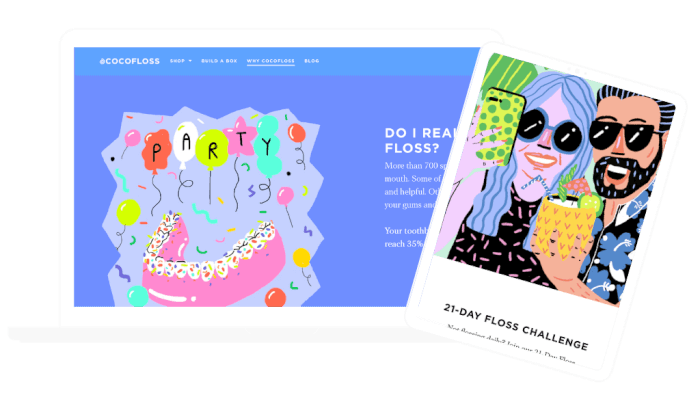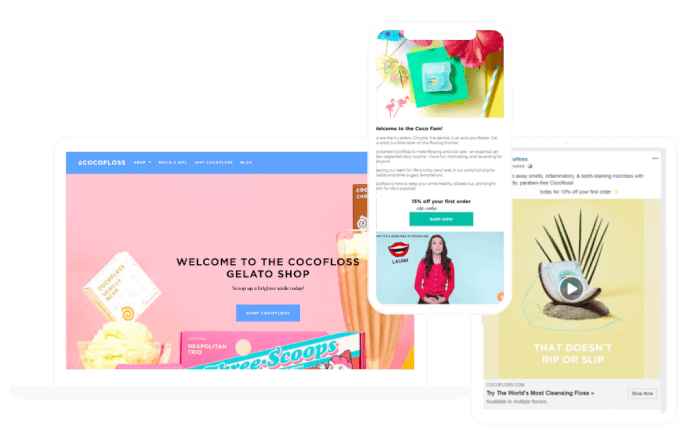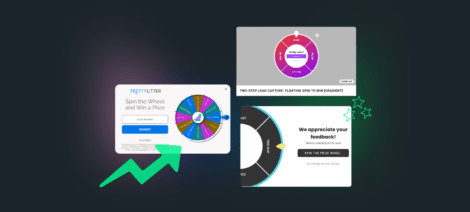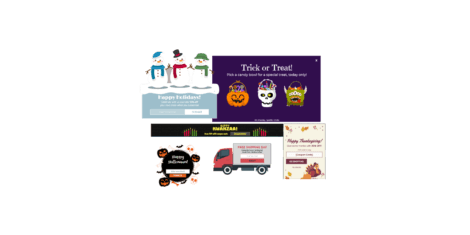With consumer behavior finally picking up now that we’re passing into the back half of Q1, it’s time to really get into the groove of acquiring new customers. Like every year—it’s going to be critical to craft campaigns with an omnichannel focus, uniting your efforts rather than siloing them by channel or platform.
We’ve had to deal with a lot of buzz about how branding is dead and how ad spend is everything, but I think that simply gives us a window to better understand what branding is.
Branding is not simply making a fancy logo or developing some overarching “personality” that embodies your company. It’s everything your company does, wrapped up together and consistently communicated to consumers. The main takeaway is this: the elements of branding go beyond what you expect, and can be discovered by learning from your customers. Creating a relationship with them allows you to continuously evolve your branding into something they value and contribute to.
We’ll start by looking at your website as the launching point for this branding strategy and ways to center all your efforts around this central hub. Then we’ll look at aligning your campaigns with paid advertising, and how to continuously optimize the process through A/B testing.
Your Website = Where the Magic Happens
Your website should be the central hub of all things YOUR BRAND. If your website isn’t on brand then…you’ve got bigger problems. By creating a website that is optimized both in terms of user experience but also for branding strategy, you’ll have created a winner.
While branding is everything from the vibe of your Social Media accounts to the unboxing of orders—it all starts on your website. Your brand voice should be in everything you do, so let’s start simple by addressing onsite imagery and promotions.
Your homepage should immediately reflect the essence of the brand voice you’re going for. If you want to be the first thing shoppers think of for the softest, most sustainable sheets, then reflect with powerful, relevant hero images and homepage content.

Amplifying Your Onsite Branding
Amplify this theme throughout your website via promotions, a banner counting down to the best night’s sleep ever, or even an exit offer giving them 20% off building a sustainable bedding bundle. Everything you do with promotions, from new visitors to cart abandonment offers, should have this brand voice at its core, reinforcing your mantra and resonating consistently with visitors.
Make sure that your promo experience reflects what channel they’re visiting from as well. You can utilize UTM tracking parameters so each campaign’s messaging and aesthetic is mirrored in Justuno promotions. The more consistent you are with promotional areas, the more brand power you build, and the higher your conversion rates will be.
Don’t forget, in the world of e-commerce, trust is paramount for shoppers when weighing purchase decisions. Oftentimes, the better your branding and enthusiastic your customer base, the more likely you will close sales.
Facebook and Google Ads
Facebook and Google ads are foundational to a marketing stack for customer acquisition, so let’s make sure you’re approaching these each with a solid understanding of their differences for maximum branding effectiveness.
Certain messages work better in different channels, but if you silo too much, your Google ads can feel like they came from a completely different planet compared to your Facebook ones.
You get around this by aligning your channels around onsite goals. Website context is the single most important lens to view your campaign efforts through. Set up your landing experiences around these goals, and then build campaigns driving traffic to those pages. Leverage UTM tracking parameters to differentiate sources for maximum personalization.
At the same time, you can’t really control precisely how visitors discover your website, but you can control how your website reacts to traffic. We tout incrementality so much at Justuno—don’t change your website all at once. It’s best to make small improvements to small ‘moments’ across your website, hopefully driving consistent improvement and consistent positive results.

Bringing it All Together & Testing Your Strategy
Once you’ve got a solid site experience, and off-site marketing campaigns set up to amplify your brand, it’s time to unite the entire omnichannel strategy.
Start small by ensuring you have a strong opt-in on one product page, then improve the email sequence that fires after that, all while ensuring that your cart abandonment campaigns are brilliant and focused on maximizing conversions.
Build ways to get as many email opt-ins as possible that also contextualize the relationship these people are starting with your brand. Use that context as your North Star while guiding your prospects to purchase via email, SMS or whatever retention channels work best for your branding strategy.
Effectively Integrating Your Paid Advertising Channels
Going website-first with your omnichannel strategy allows you to easily experiment with the highest-potential aspect of working with multiple channels: network effects. As an added bonus, many of the changes you make onsite will cost you very little in comparison to expanding and testing new paid ad campaigns.
Of course, paid channels are constantly shifting. Sometimes acquisition spend will be cheaper on Facebook while remarketing is high, but sometimes the reverse is true. As new channels become available, their relatively low cost can earn you quick wins (like YouTube ads right now). The important thing to consider here is to ensure channel and acquisition choices align with your brand voice and target audience.
Don’t Get Bogged Down A/B Testing
One thing that can quickly bog you down is A/B testing. While getting the right message to the right customer at the right time is SUPER important, onsite A/B tests won’t always paint the most accurate picture of marketing performance. Sometimes statistical significance is hard to get, or the traffic simply isn’t there to test what you want to test…that’s okay!
Instead, A/B test broad marketing efforts like Facebook vs Google campaigns. Don’t forget that their robust analytics can help you augment other website metrics along with those found in your Justuno dashboard. Use the combined force of these insights to focus on small incremental improvements within your acquisition channels and corresponding on-site experience.
Final Considerations for Your Omnichannel Branding Strategy
Marketing is a process that genuinely has simple rules, but you can play those rules off each other to build complex consequences that will drive huge results over time. Don’t overfocus on huge growth now, focus on building consistent, long term relationships with customers via a strong branding strategy that resonates throughout your marketing efforts. Focus on your brand voice and every other step will become clear when it comes to optimizing your omnichannel marketing over time.


